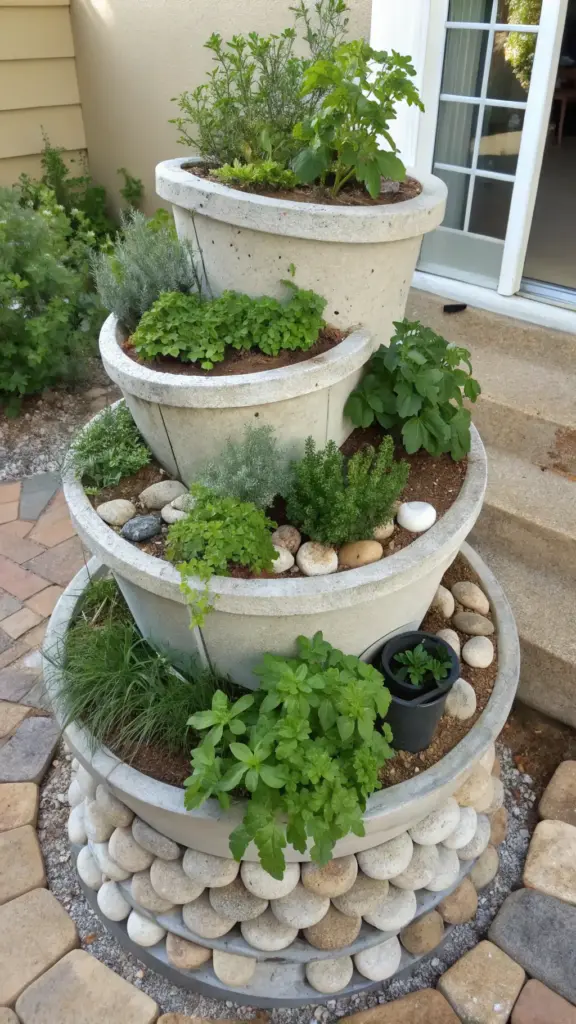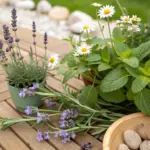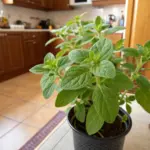2. Spiral Herb Garden Masterpiece

When I first discovered the concept of herb spirals, I was completely mesmerized. This ancient permaculture design has become my absolute favorite garden feature! Not only does it look stunning, but it’s also an incredibly efficient way to grow herbs in different microclimates within the same structure.
Understanding the Magic of Herb Spirals
The genius behind herb spirals lies in their unique vertical design that creates multiple growing conditions. Think of it as a mini-ecosystem! At the top, you get excellent drainage and more sun exposure, while the bottom stays cooler and retains more moisture. I’ve found that this design allows me to grow Mediterranean herbs like thyme and rosemary at the top, while keeping moisture-loving mint and parsley happy at the base.
Planning Your Spiral Garden
Before you start stacking stones, here’s what you need to consider:
- Location: Choose a spot with at least 6 hours of direct sunlight
- Size: A typical spiral is about 6 feet in diameter and 3 feet high
- Materials needed:
- 2-3 tons of stones or bricks
- Quality topsoil
- Compost
- Gravel for drainage
Construction Steps That Actually Work
I’ve built several herb spirals now, and here’s the foolproof method I’ve developed:
- Start with a solid foundation of gravel for drainage
- Create the first layer using your largest stones
- Gradually build up in a spiral pattern, tilting slightly inward
- Add soil as you go, creating different layers:
- Bottom layer: Heavy soil mix with clay
- Middle: Standard garden soil
- Top: Well-draining mix with sand
Microclimate Magic: Plant Placement
Here’s how I organize my herbs for optimal growth:
- Top/South: Mediterranean herbs (rosemary, thyme, sage)
- Middle: Basil, oregano, marjoram
- Bottom/North: Mint, chives, parsley
Maintenance Secrets
The beauty of herb spirals is their low-maintenance nature, but there are some key care tips:
- Water more frequently at the top
- Mulch heavily to retain moisture
- Harvest regularly to promote growth
- Check stone stability seasonally
I love how my herb spiral has become the focal point of my garden, drawing compliments from visitors while providing a bounty of fresh herbs for cooking. The way it combines form and function is simply brilliant!
Ready to explore something equally stunning but with a touch of European elegance? Up next, we’ll dive into creating a French-Inspired Formal Herb Garden that brings the timeless beauty of Versailles to your backyard. Click next to discover how to transform your space with symmetrical patterns and aromatic herbs that would make any French gardener proud! 🌿









GIPHY App Key not set. Please check settings